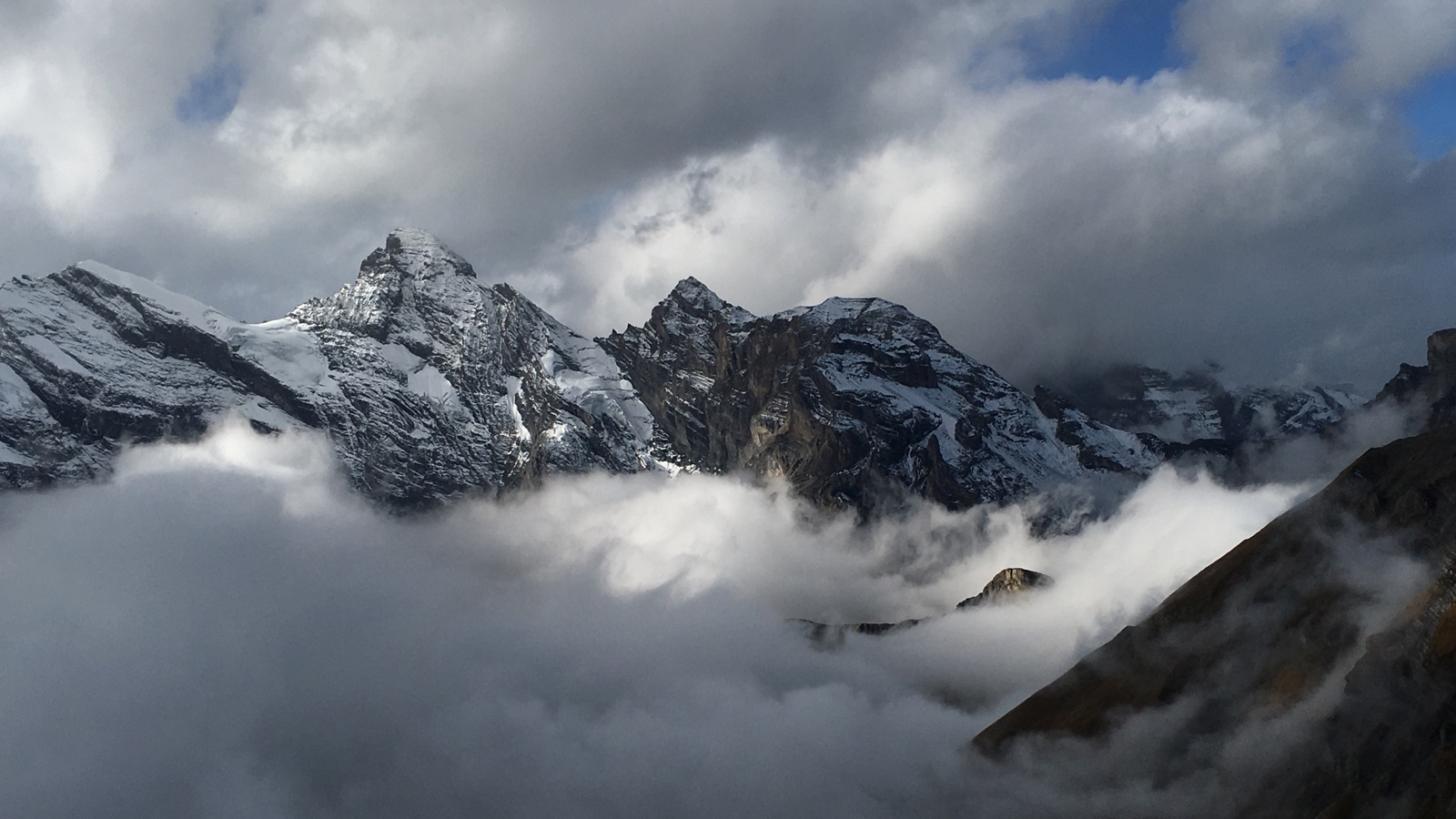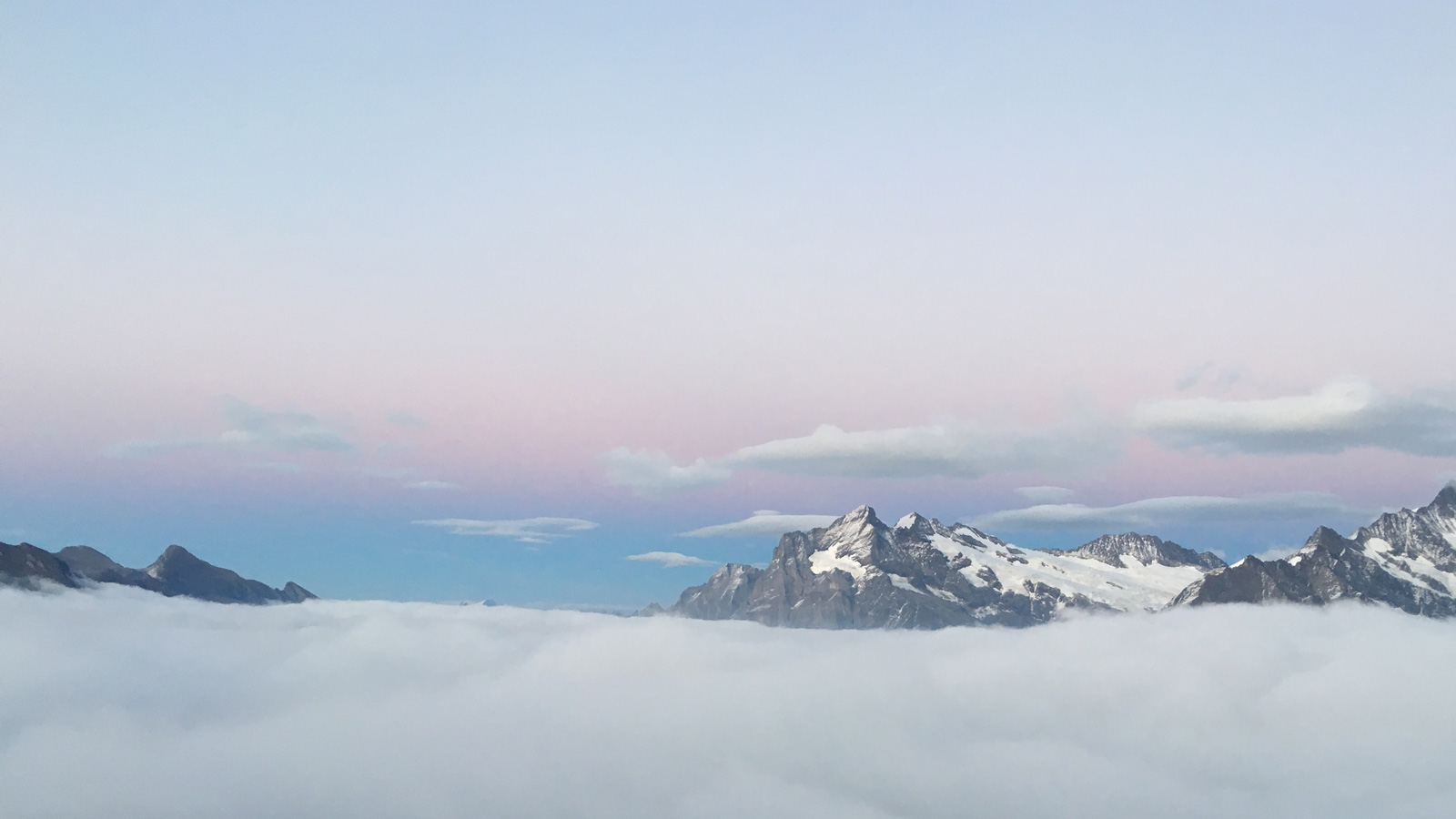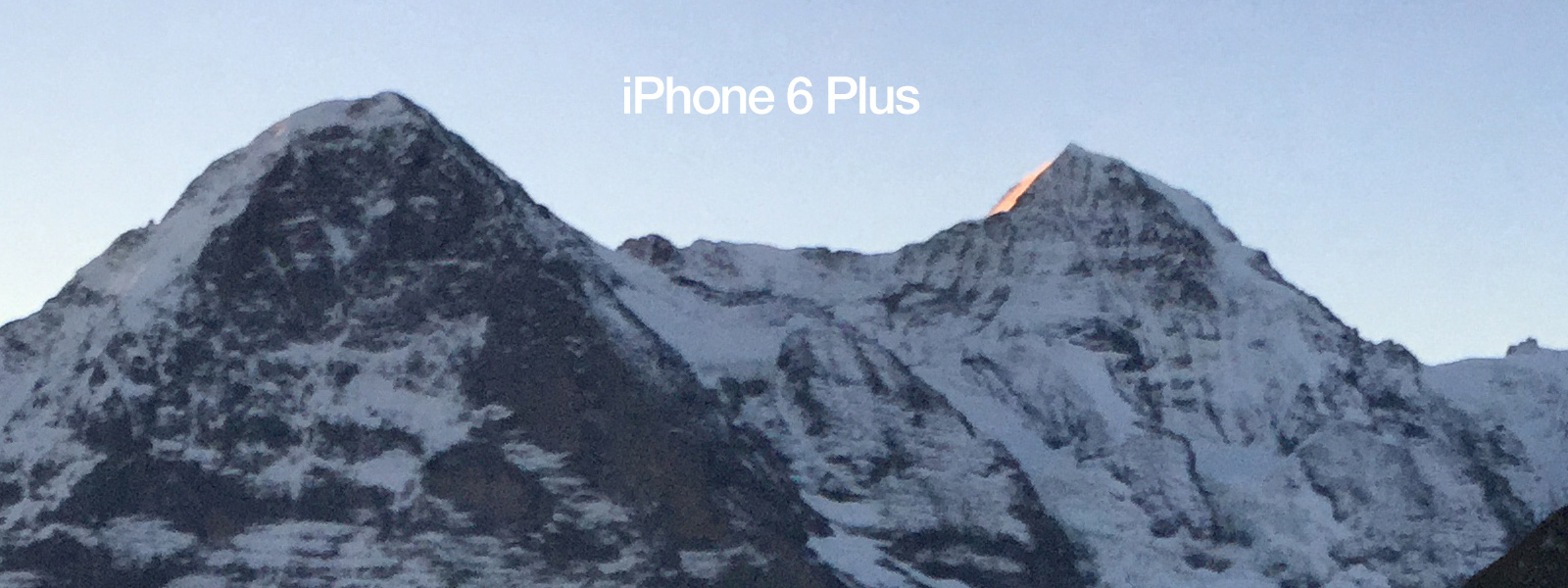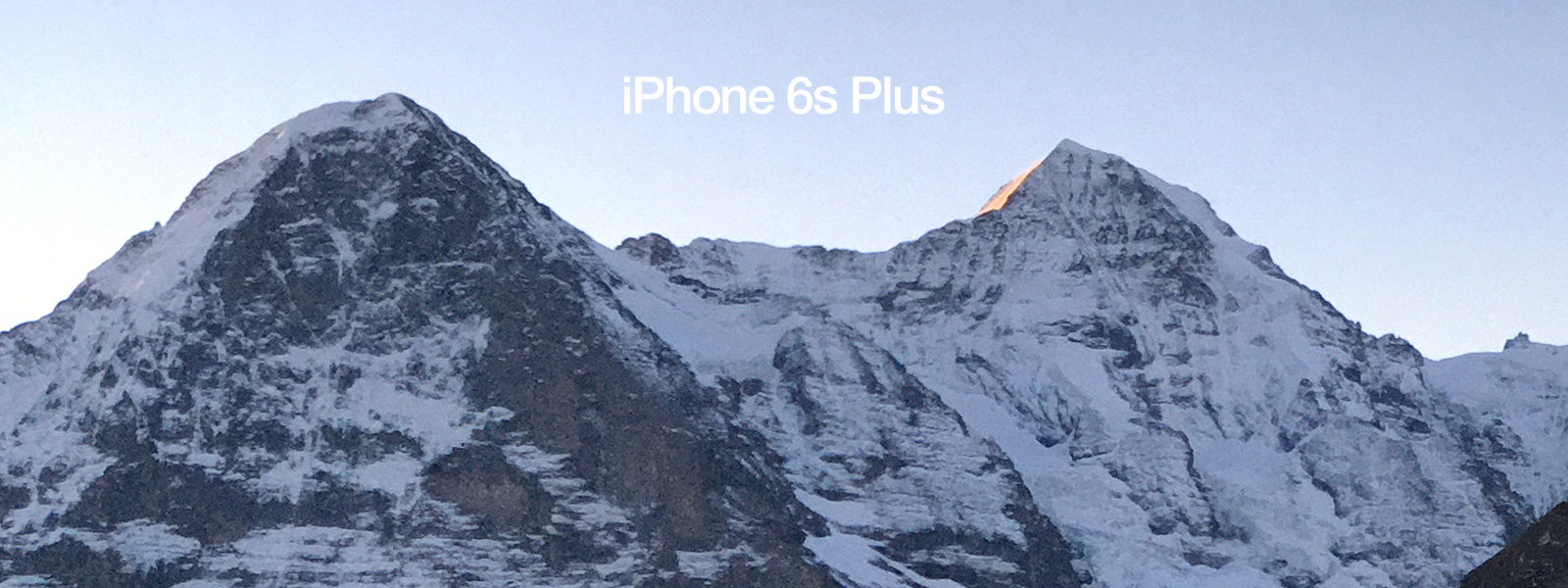Shot on iPhone 6s
The gear we used can be found at the bottom of the page… and BTS video coming soon ;-)
iPhone 6s Plus Camera Review: Switzerland
Shot on iPhone 6 ;-)
We’ve spent the last week in Switzerland rigorously testing the new iPhone 6s & 6s Plus cameras — pushing them to the max and learning how the iPhone 6s upgrade affects photographers. We have two 6s's and two 6s Plus's, in all four colors!
We’ve shot a lot on the 6s. In fact, we’ve already shot 2121 photos + 55 panoramas + 237 time-lapses + 1310 videos (including Live Photos)!
All along the way we’ve been carefully comparing the results to the iPhone 6.
There's all kinds of new technology packed into the 6s, so we set out to answer the same question as usual:
How does this make my pictures
(and videos) better than before?
The goal of our review is to see what the iPhone can do primarily as a standalone device, so all the gear used for this project can easily fit into a messenger bag — no big dSLR lenses, no fancy stabilizers, and no off-camera mics. Mobile photography’s unique advantage is, well, mobility, so we fight hard to maintain it. You can find the tripod and iPhone 6s tripod mount we use at the bottom of this post.
Camera-Relevant Upgrades
> Optical Image Stabilization for video (Update: I've learned OIS is only active on 30FPS video)
> Resolution increase for still + motion
> Live Photos
> New water proofing
> Selfie Camera flash + resolution increase
Game Changer:
Video Optical Image Stabilization
Optical Image Stabilization (OIS) for video is hands down the most significant improvement in the iPhone 6s Plus camera upgrade. The 6 Plus has OIS for stills (mainly helpful with low-light photos), but it wasn’t active when shooting a video or time-lapse. Now, with the 6s Plus only (not the 6s), we have active optical stabilization of video and on both devices we have digital stabilization of time-lapse and slow-mo content… the improvement is dramatic.
The time-lapse piece at the top utilized the Digital Image Stabilization significantly. The ability to create stable time-lapses anywhere, anytime, opens up so many doors. I can't wait to see what everyone creates with this.
(Update: I've learned OIS is only active on 30FPS video. What's pictured here, a time-lapse, is Digital Image Stabilization.)
---
Notes about stabilization
Note 1: I’m a huge fan of Instagram’s Hyperlapse app, which utilizes the accelerometers inside the iPhone to offer insanely great software stabilized video, so I was really curious to see how stable the footage might be when combining Apple’s built-in OIS with Hyperlapse. However, we quickly discovered Hyperlapse didn't work with the iPhone 6s while we were there, but they released an update on October 6, so I can't wait to see how it works!
Note 2: Time-lapses are now digitally stabilized, but still 1080p (1920x1080 @ 30FPS)
Note 3: Motion video can now be shot w/ the following settings:
> 1280x720 @ 30 FPS (720p HD)
> 1920 x 1280 @ 30FPS (1080p HD)
> 1920 x 1280 @ 60 FPS (1080p HD)
> 3840 x 2160 @ 30 FPS (4K)
Slow motion inherently makes video feel more stable, and now with stabilization active on slo-mo video as well, shooting handheld is rock solid. The following two shots are handheld.
> 1920x1080 @ 120FPS (previously this was 1280x720 @ 120FPS)
> 1280x720@240FPS
Note 4: Video settings can’t be changed in the native camera app. Change them in Settings > Photos & Camera > Record Slo-mo.
> Pro tip: I discovered you can use Siri to quickly switch to your camera settings. Just say, “Hey Siri, open camera settings.” We found ourselves switching shooting modes quite a bit based on our environment, so this little trick can help save a lot of time.
Note 5: We noticed a minimal crop (5–10%) on the 6s / 6s Plus in video mode. This is related to the new built-in stabilization features.
Note 6: We still prefer to shoot most video content in 1080p @ 60 FPS because it looks crisp/smooth, takes less space, and gives us the option to drop into half-speed slo-mo when needed.
Live Photos enrich stories
Every year, Apple introduces a new feature that enables us to capture our stories in a new way. Instead of just incremental upgrades to existing features, they consistently unveil a new capability.
In the iPhone 5, we saw pano mode, then slo-mo in the 5s, then time-lapse in the 6. Each new medium enables us to capture and share the world around us in a new way. This year, that new feature is Live Photos, and I've had a blast playing with them.
Before I share any, check out this gallery of still photos:
Now, be sure to turn up your speakers and check out these same photos, Live.
I really appreciate the deeper story each of these tells — the sound of the cowbell, the flying dust under the drone, the steam rising from my Swiss hot chocolate. We take pictures to tell stories and share experiences with those around us, and Live Photos helps us do that in a way we simply haven't before.
What I love about Live Photos is its ability to accomplish this, completely behind the scenes. Some of these Live Photos in this gallery were completely unintentional, which is the best part about it.
---
How to shoot great Live Photos
> Focus on your still photo first. Live Photos can only be great if the still photo is great. Focus on getting a killer still image first, then a great Live Photo will naturally follow.
> See with your ears. When you are shooting Live Photos, think about the sound, not just the visuals. Cowbells, running water, urban traffic, laughing, etc. Sound makes Live Photos way better and it’s fun to think creatively about what sound you are capturing.
> Remember before and after. The motion and sound captured in a Live Photo is actually not just after you click the shutter but before as well. Keep this in mind while you’re shooting or you’re bound to capture yourself talking.
> Watch the indicator. After taking the shot, wait for the yellow “Live” indicator at the top of your screen to disappear before moving your camera.
Live Photos notes
Note 1: Most 3rd-party video editing apps (like Clips or Vignette) that I could find don’t support them yet. It would be really nice to drop 15–20 on a timeline and cut them together to music.
Note 2: Live Photos minimally reduces extreme low-light capabilities and they take about 2x the space as a regular image. It’s definitely a sacrifice worth making, but one to be aware of.
Note 3: Facebook has just started experimenting with using video for profile pictures — if they enable mobile upload functionality of Live Photos, this could become the most popular use of this new feature overnight.
More pixels or better pixels?
For the last four years, we’ve had an 8 megapixel sensor in our iPhones. In a tech-spec competition, Apple’s camera fell behind a long time ago, but their focus has never been flashy specs, and as a result we’ve always had amazing images from our iPhone cameras.
Apple's focus has been more on pixel size than pixel count and it has served us really well. This year when rumors began to trickle out about a 12MP sensor, concerns rose around low light performance. How will the higher resolution affect grain? Here are a few raw shots from the 6s, and then we'll talk about low light.
Raw Image Gallery
(cropped, but unedited and straight from camera)
Low light Performance
There’s been some talk about loss of detail in low light with the iPhone 6s, so I set out to see it with my own eyes. I shot quite a few side-by-side photos in different environments and the image below is the most accurate example of findings. Overall, I found slight loss in edge detail in the highlights when shooting with the iPhone 6s, but I also found a more serious gain in detail in the mids and the shadows. See below:
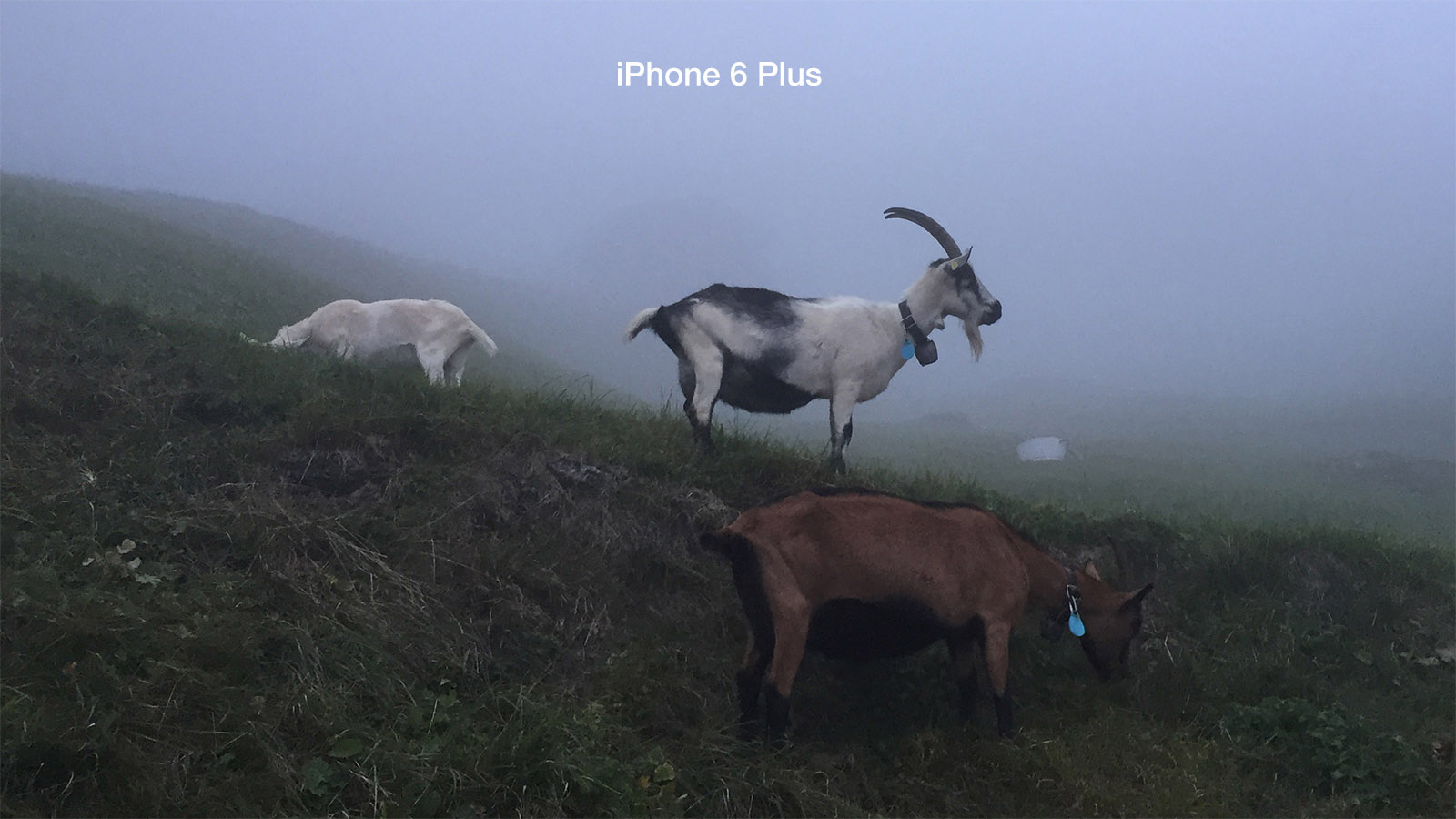
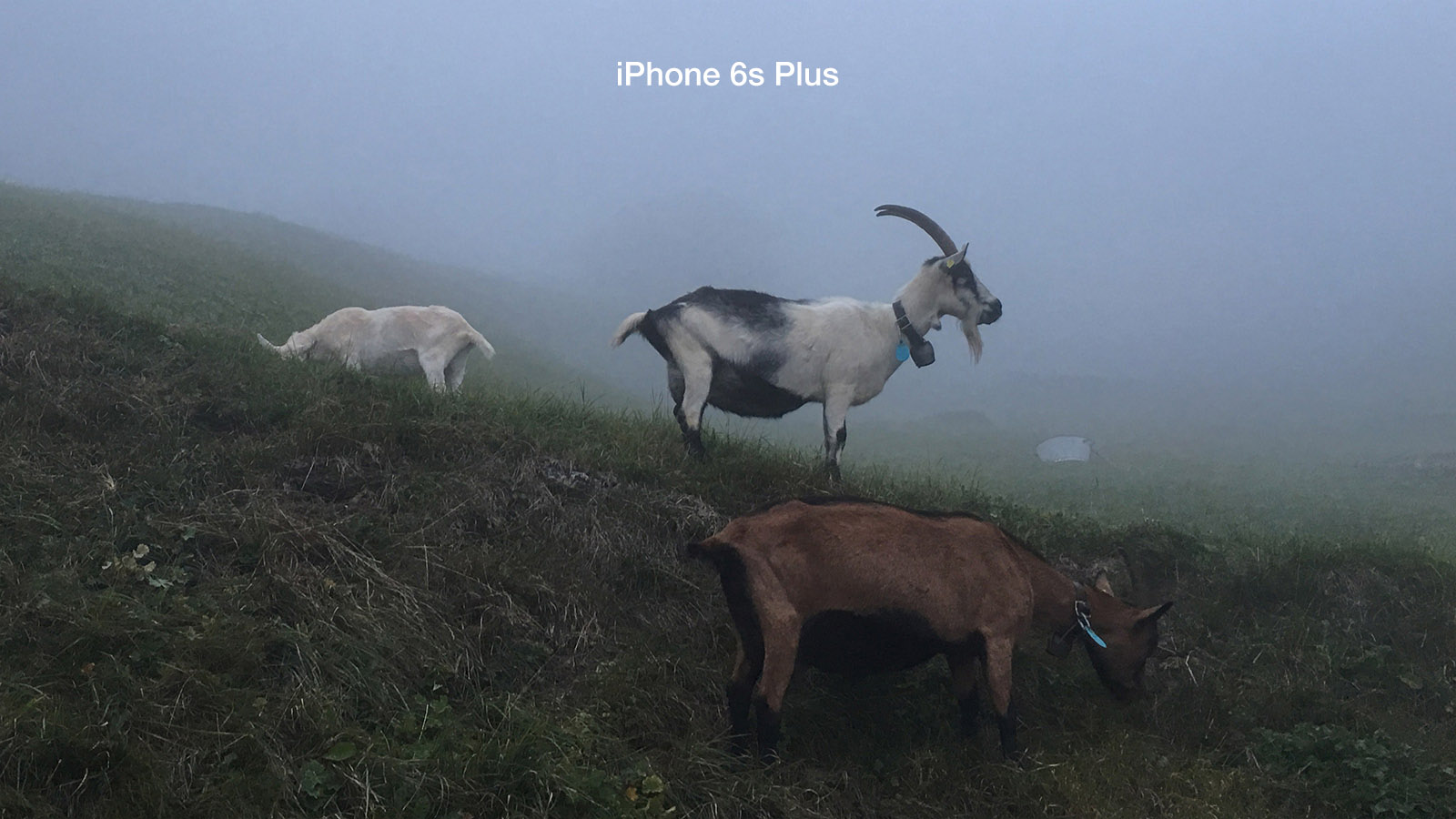
Minor loss in highlight edge detail (100% crop):
Major gain in detail in mids and shadows (100% crop):
I’ve made both of these raw, straight-from-camera files available to you for download to check them out yourself: download the zip here.
This tiny loss in highlight edges is likely caused by new noise algorithms implemented to reduce low light noise with a higher megapixel sensor. Remember, the 6s does pump 30% more resolution than the 6, and ultimately I think the tradeoff is a win in the 6s.
Extreme Low Light
Here’s another side-by-side test in extreme low light. This is moonlight alone on the mountaintops. I found a noticeable improvement with the 6s Plus in brightness and clarity.
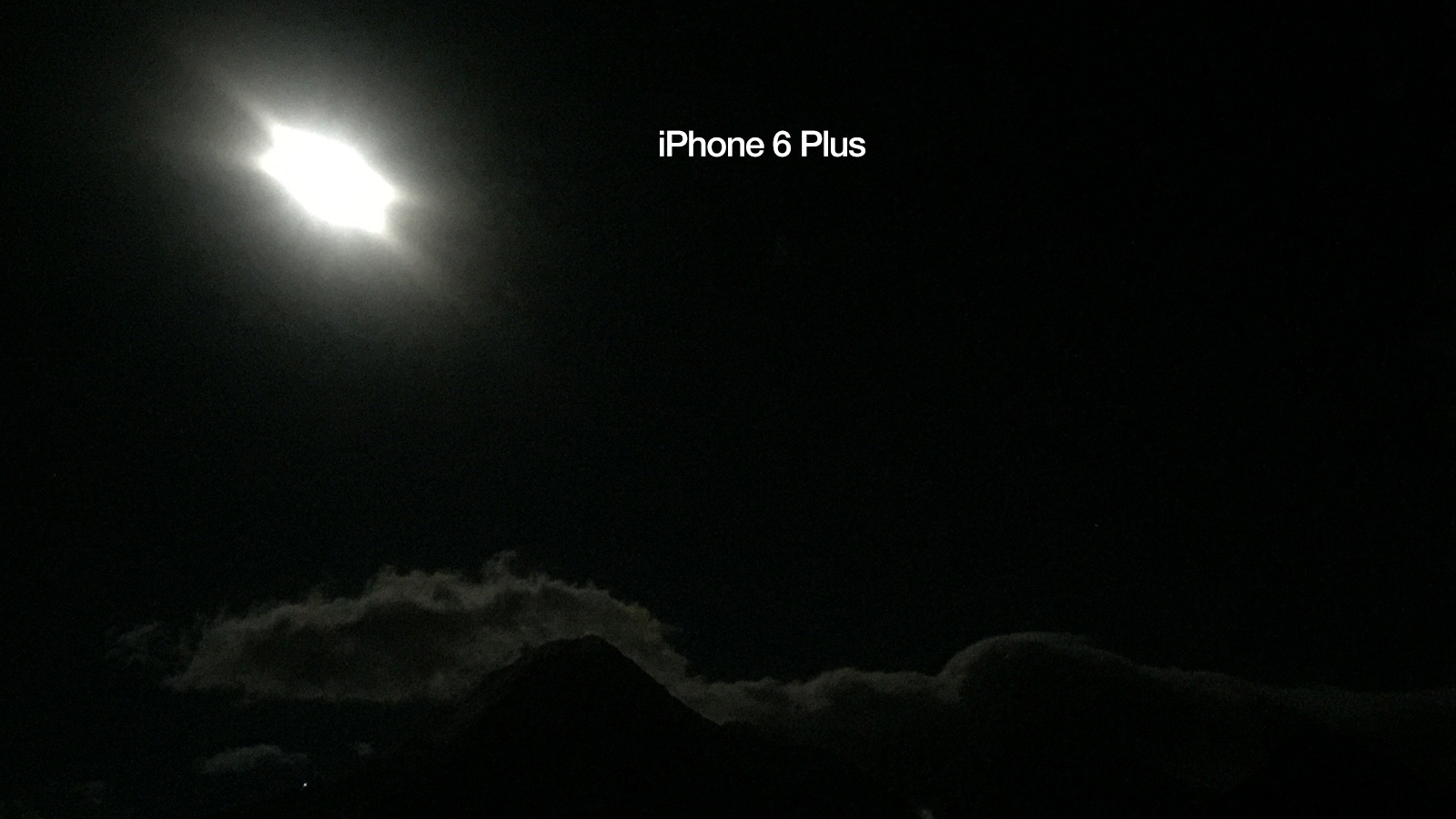
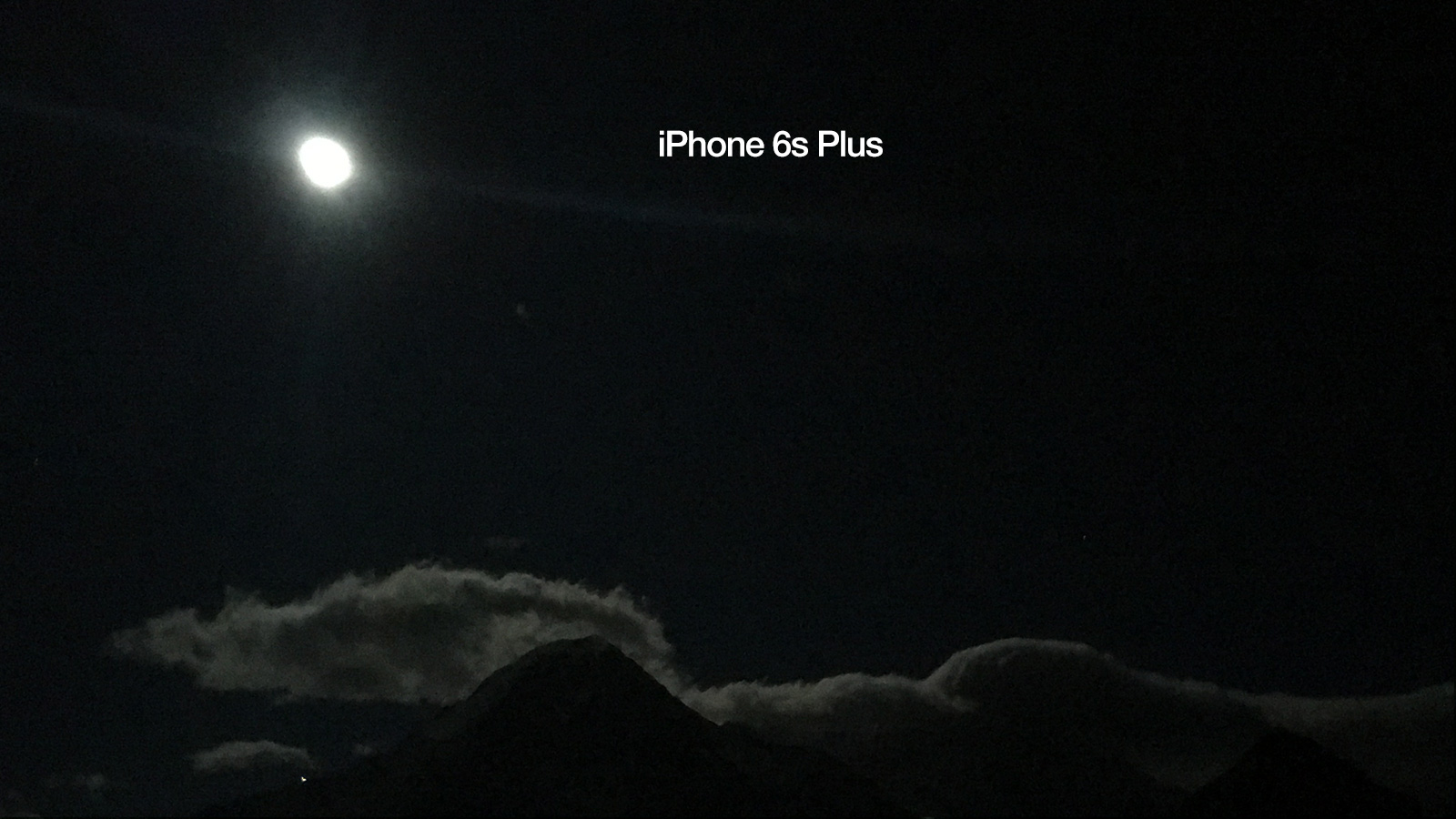
Here's the above image, at 100% crop:
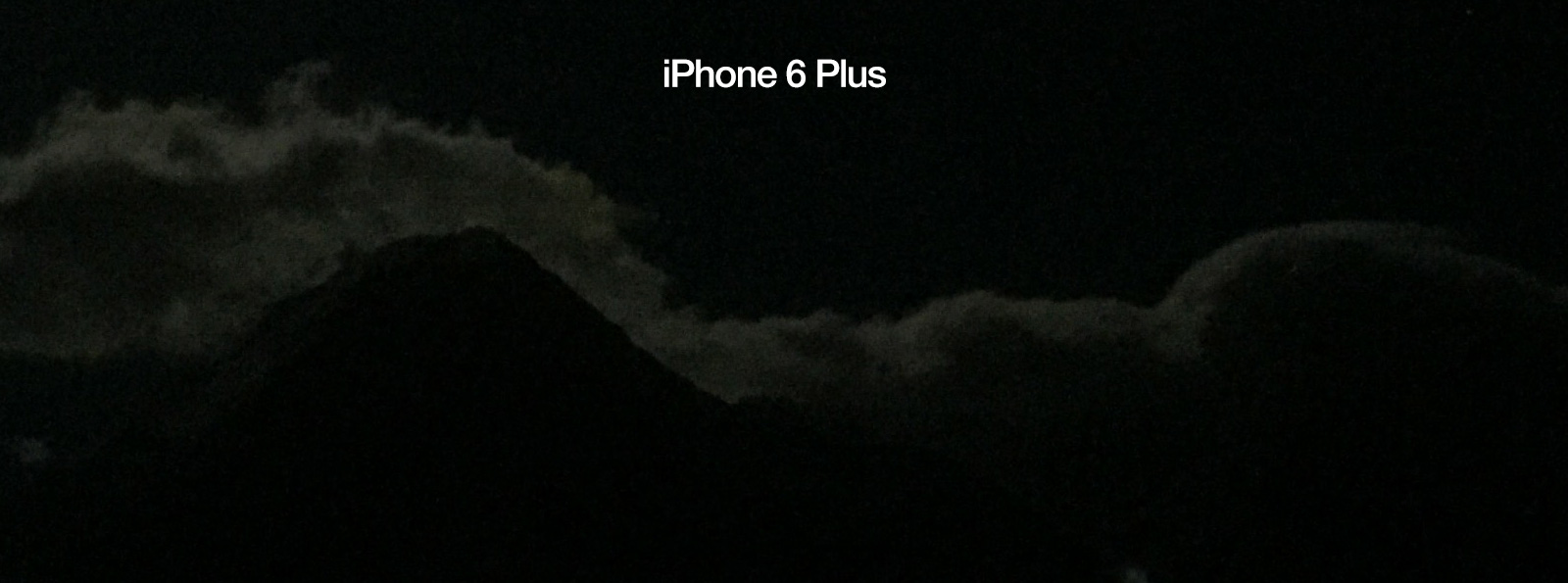
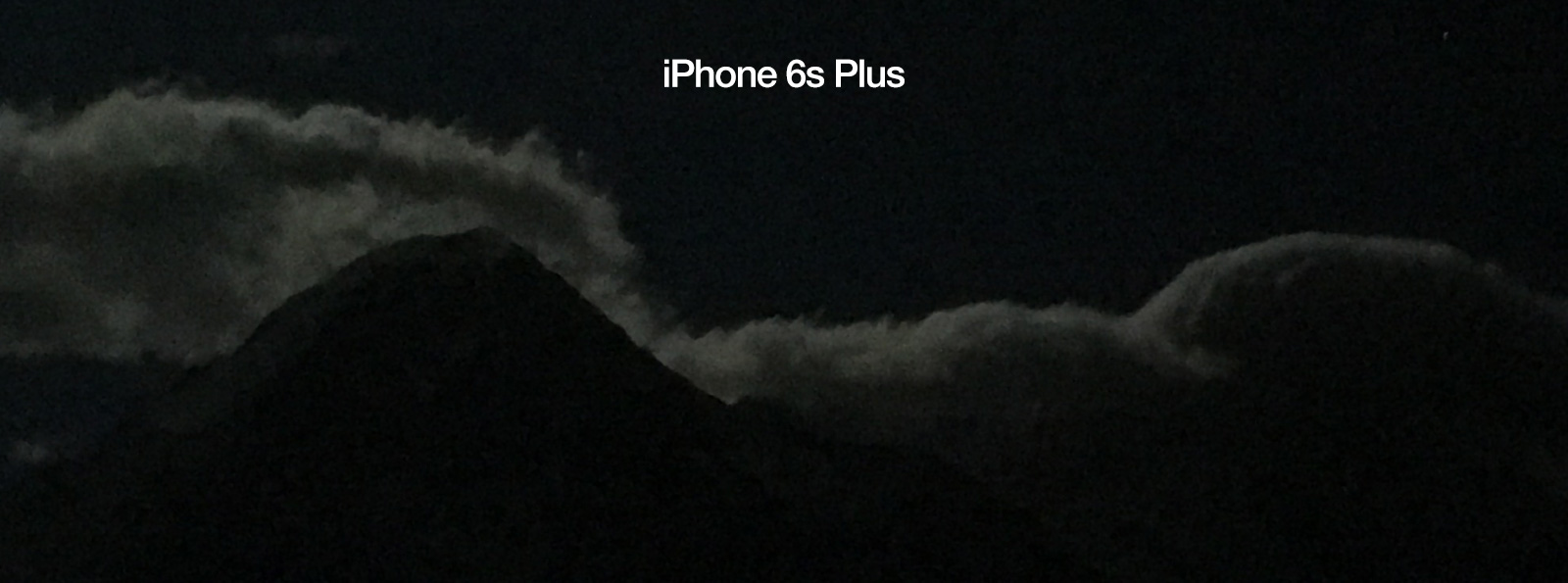
---
DxO One iPhone Add-on
I also brought the new DxO One iPhone add-on with me on this trip, primarily to find out what I can do with it in low light, and I’m pretty impressed.
Here’s an unedited shot of the same scene shot on iPhone 6s Plus + DxO One (15 seconds, f/4, 800 ISO).
iPhone 6s Plus + DxO One (15 seconds, f/4, 800 ISO)
Low light has been the greatest challenge for pros looking to work on their iPhones as their primary camera, but I think we’re not far off from seeing that change. Whether it's the DxO One or not, the dSLR’s last stronghold is quickly fading.
If you are interested in the DxO One iPhone add-on, you can get it here.
Extreme Dynamic Range Test
After the findings in the test above, I decided to conduct an extreme dynamic range test in post on the panoramas below. Given the images look pretty identical off the bat, I was somewhat surprised at what I found.
Check out these two panos shot side-by-side below… one with the 6 Plus, the other with the new 6s. Both of the images look essentially the same to the naked eye. The 6s has ever-so-slightly higher contrast and sharpness (which was consistent throughout the test).
I applied an extreme curve filter to reveal dynamic range detail:
After applying the filter I found significantly better detail in the shadows AND the highlights w/ the 6s (click image to view full size):
Why am I looking at rainbow pictures?
This extreme test reveals the 6s has higher dynamic range, which means when you are editing the picture you can push it to new depths without posterizing or clipping highlights. This image would also likely print better at large sizes.
Water Resistance Impacts Photographers
Pro or not, all of us have been in situations where we wanted to capture something with our iPhones but it began raining, or we didn't want to get too close to the splashes in the pool, and so on. It looks like this concern could be waning.
Apple didn’t announce anything about this, but the team over at iFixit found some interesting (and awesome) results regarding waterproofing features on the iPhone 6s and 6s Plus. They are very clear, the 6s is NOT WATERPROOF (so don’t jump into a pool with it), but they did find several innovations that make it much more resistant to liquid damage.
Water resistance is huge for any photographer, but especially pros, as we explore the unknown and capture the world around us. We were drizzled on/snowed on in Switzerland while shooting our time-lapse multiple times, and I’ve lost an iPhone to a torrential downpour while on a shoot in the past. This capacity for our gear to withstand the elements is a major innovation for photographers and filmmakers.
Who knows? Maybe it won’t be long until we are shooting slo-mo underwater films with our bare iPhones (but I’m not holding my breath ;-).
Selfie Camera + Flash
Possibly the most drastic update in the 6s versus the 6 is the selfie camera and its flash. The resolution has gone up almost 5x (from 1.2MP to 5MP) and they’ve implemented a creative selfie light that uses the screen itself as a huge and beautiful flash.
I found the Retina Flash does a fantastic job of color balancing skin tones in multiple environments, and there’s really no comparison in side-by-side results.
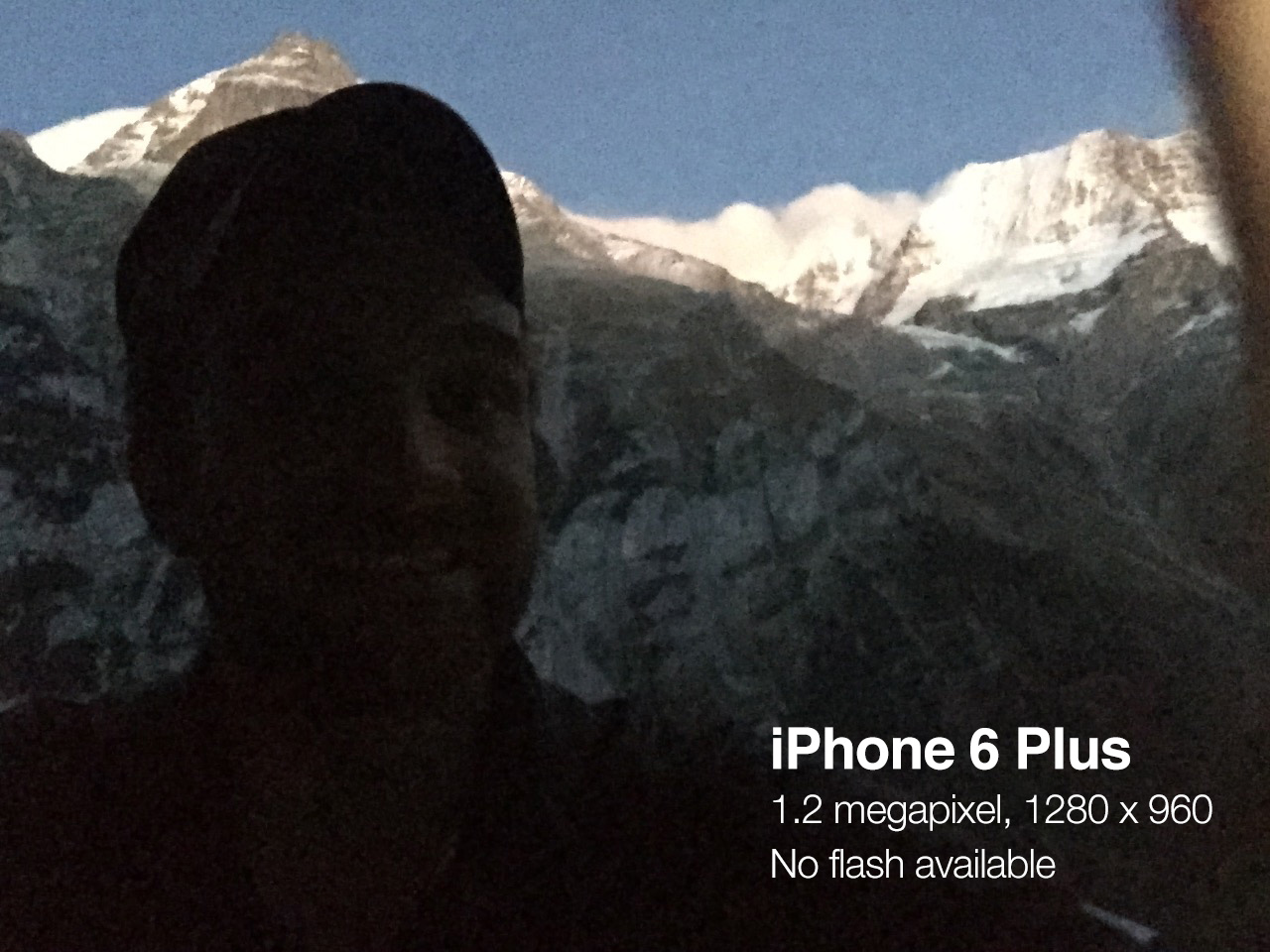
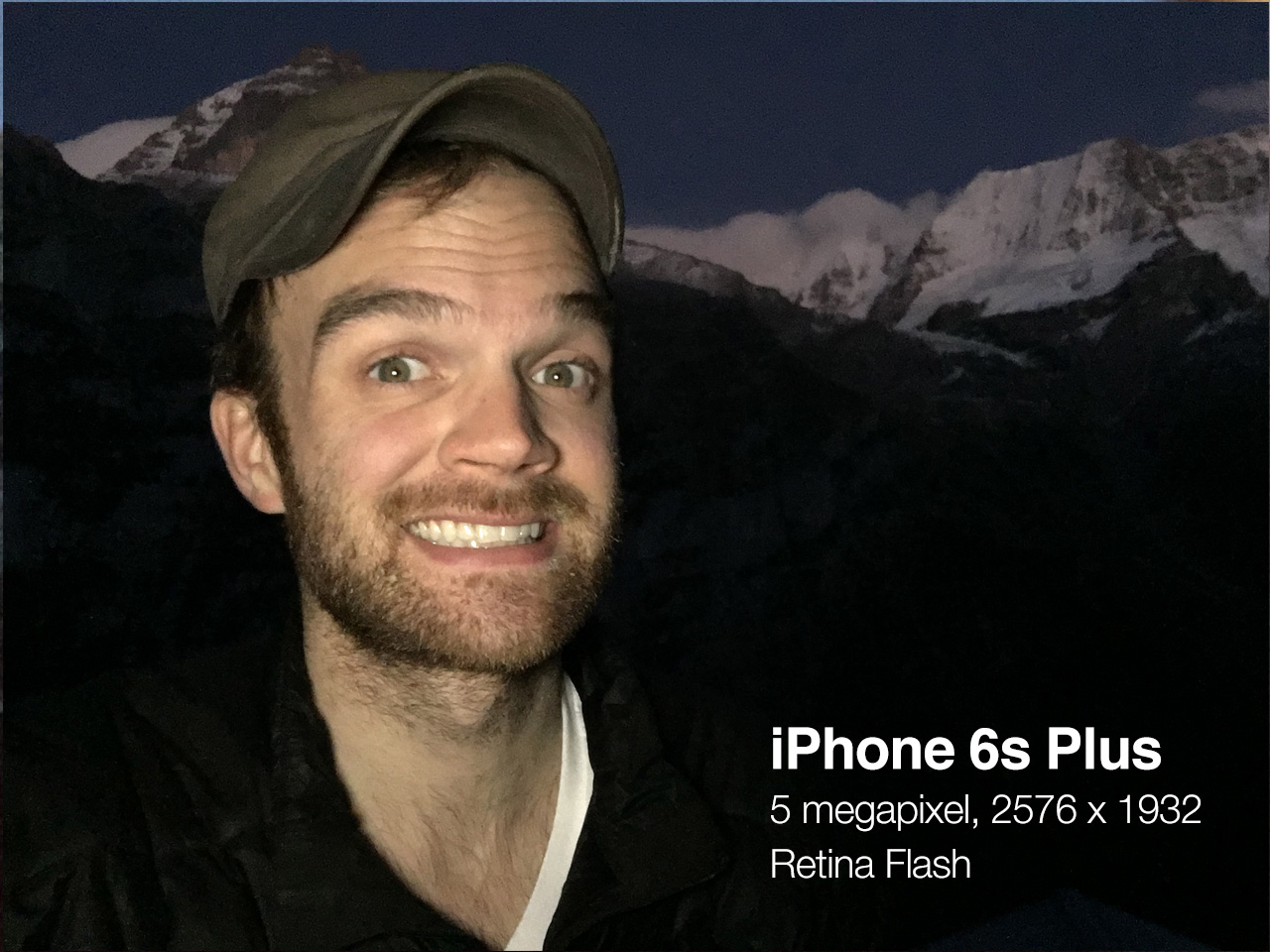
So with all this talk about the new front facing camera, can we use it for actual photos? How much better is the back camera, anyway? Here’s the side-by-side:
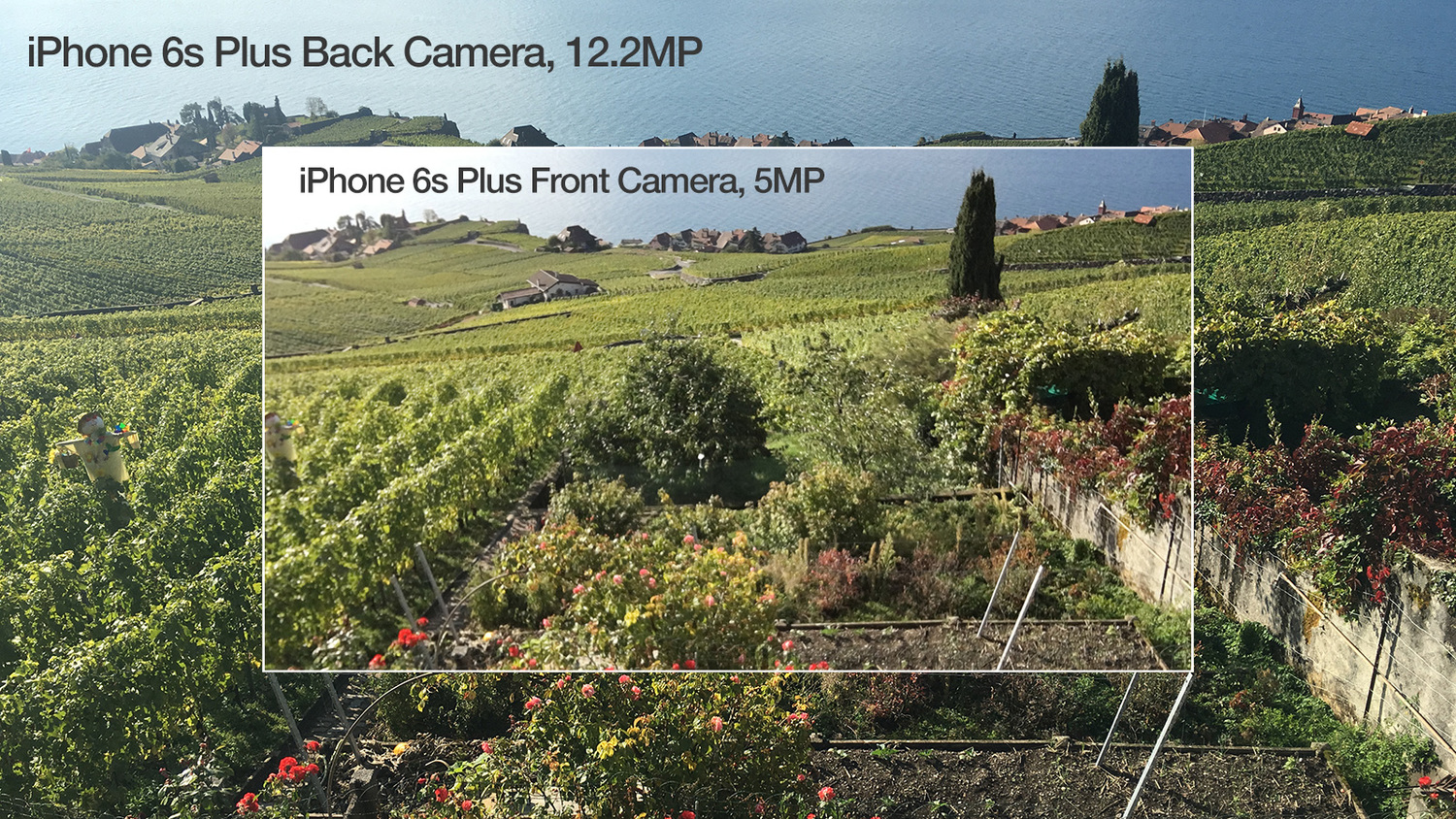
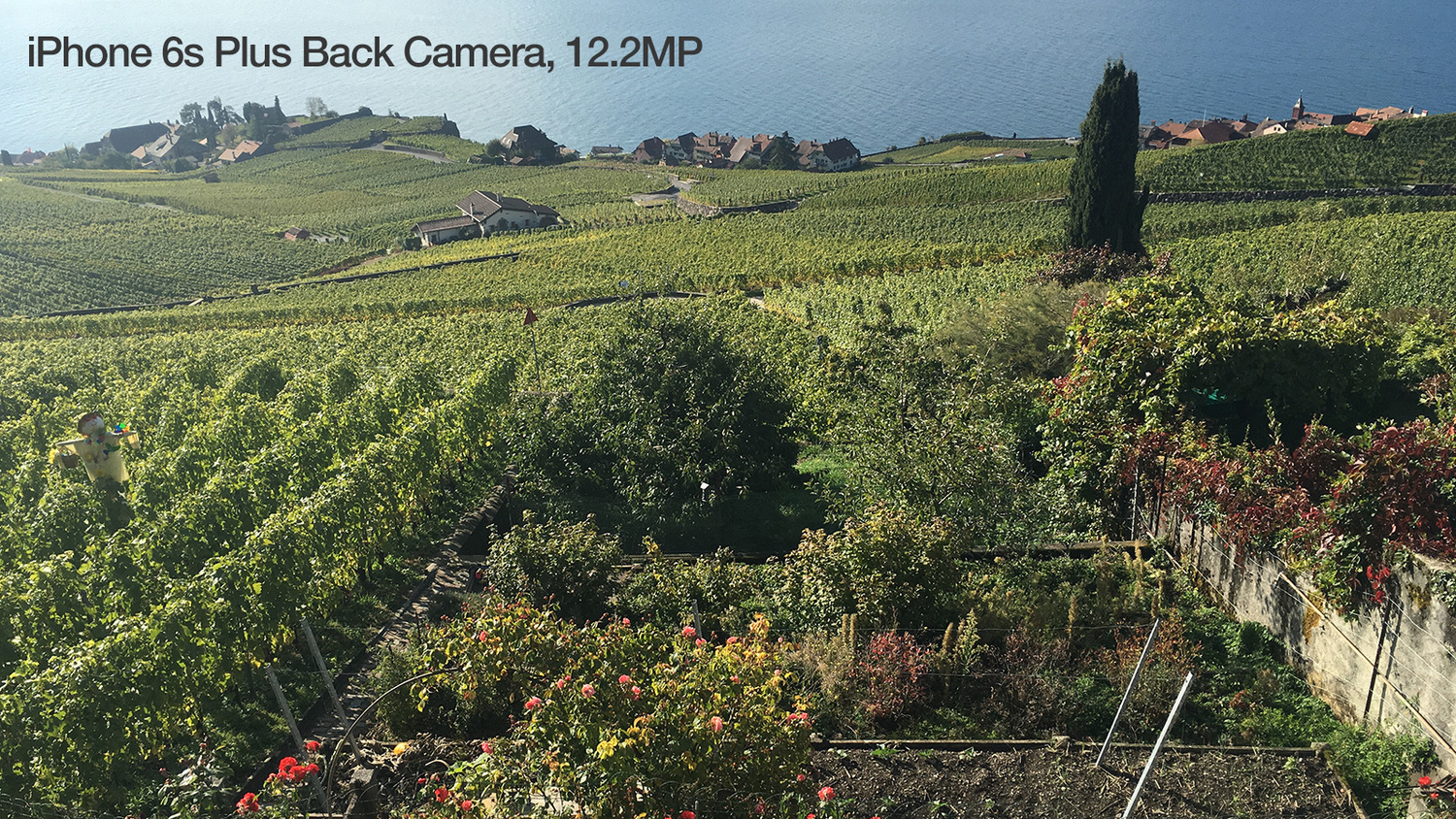
The new selfie cam is great, but the back camera is still way better. :-)
Behind the Scenes
The Bottom Line
We had a blast adventuring around with the iPhone 6s in hand… it's super fast and some of the new features are really fun to create with. The capabilities we have now continue to astound me and devices like the 6s are making our creativity the only limit.
iPhone 6 is still an awesome camera, and now the 6s is an even more awesome camera. If you’re on a 6 and don’t need the video stabilization, or don’t take selfies, you might consider waiting until the "tick" of the cycle next year but you’d be missing out on all of the fun of Live Photos! :-)
Have a question/comment?
Are you excited about the iPhone 6s and 6s Plus cameras? What are you enjoying the most? Have a question? I'll be replying to every comment below.
Big thanks to jorby for all the help co-shooting, editing the time-lapse, and a ton more.
Thanks to Sleeping At Last for the amazing soundtrack in the time-lapse video.
in partnership with
Gear I Used
Shoulderpod S1 iPhone Tripod Mount: Fits iPhone 6s Plus like a champ!
Shoulderpod R1 Pro iPhone Rig: Pro rig for mounting multiple devices
Moment Lenses: The best lenses for iPhone (wide/tele/macro)
Ultrapod II: Small yet strong tripod to pair with S1 + Camalapse
Camalapse: Rotates 360° in 1 hour, great for adding movement to time-lapse
EasyAcc Solar Power Bank: Cheaper and better than mainstream competitors
Kammok: Great for relaxing while time-lapsing ;-)









